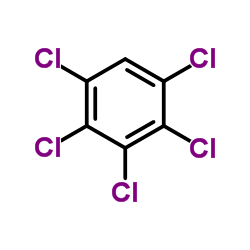Effects of sulfate concentration on the anaerobic dechlorination of polychlorinated biphenyls in estuarine sediments.
Young-Cheol Cho, Kyoung-Hee Oh
Index: J. Microbiol. 43(2) , 166-71, (2005)
Full Text: HTML
Abstract
In order to determine the effects of sulfate concentration on the anaerobic dechlorination of polychlorinated biphenyls, sediments spiked with Aroclor 1242 were made into slurries using media which had various sulfate concentrations ranging from 3 to 23 mM. The time course of dechlorination clearly demonstrated that dechlorination was inhibited at high concentration of sulfate due to less dechlorination of meta-substituted congeners. When the dechlorination patterns were analyzed by the calculation of Euclidean distance, the dechlorination pathway in the 3 mM sulfate samples was found to be different from that observed in the 13 mM samples, although the extent of dechlorination in these two samples was similar. It is possible that the dechlorination in the high sulfate concentration samples is inhibited by the suppression of growth of methanogen, which have been shown to be meta-dechlorinating microorganisms.
Related Compounds
| Structure | Name/CAS No. | Molecular Formula | Articles |
|---|---|---|---|
 |
PCB(Aroclor 1242)solution
CAS:53469-21-9 |
C6HCl5 |
|
Impacts of molt-inhibiting organochlorine compounds on epide...
2009-11-01 [Comp. Biochem. Physiol. C. Toxicol. Pharmacol. 150(4) , 436-41, (2009)] |
|
Extensive biodegradation of polychlorinated biphenyls in Aro...
2008-01-01 [Chemosphere 73(1) , 126-32, (2008)] |
|
Response of bacterial isolates from Antarctic shallow sedime...
2013-03-01 [Ecotoxicology 22(2) , 240-50, (2013)] |
|
The inhibition of LPS-induced splenocyte proliferation by or...
2004-11-01 [Toxicology 204(1) , 61-74, (2004)] |
|
Enhancement of aerobic microbial degradation of polychlorina...
2003-04-01 [Environ. Toxicol. Chem. 22(4) , 699-705, (2003)] |